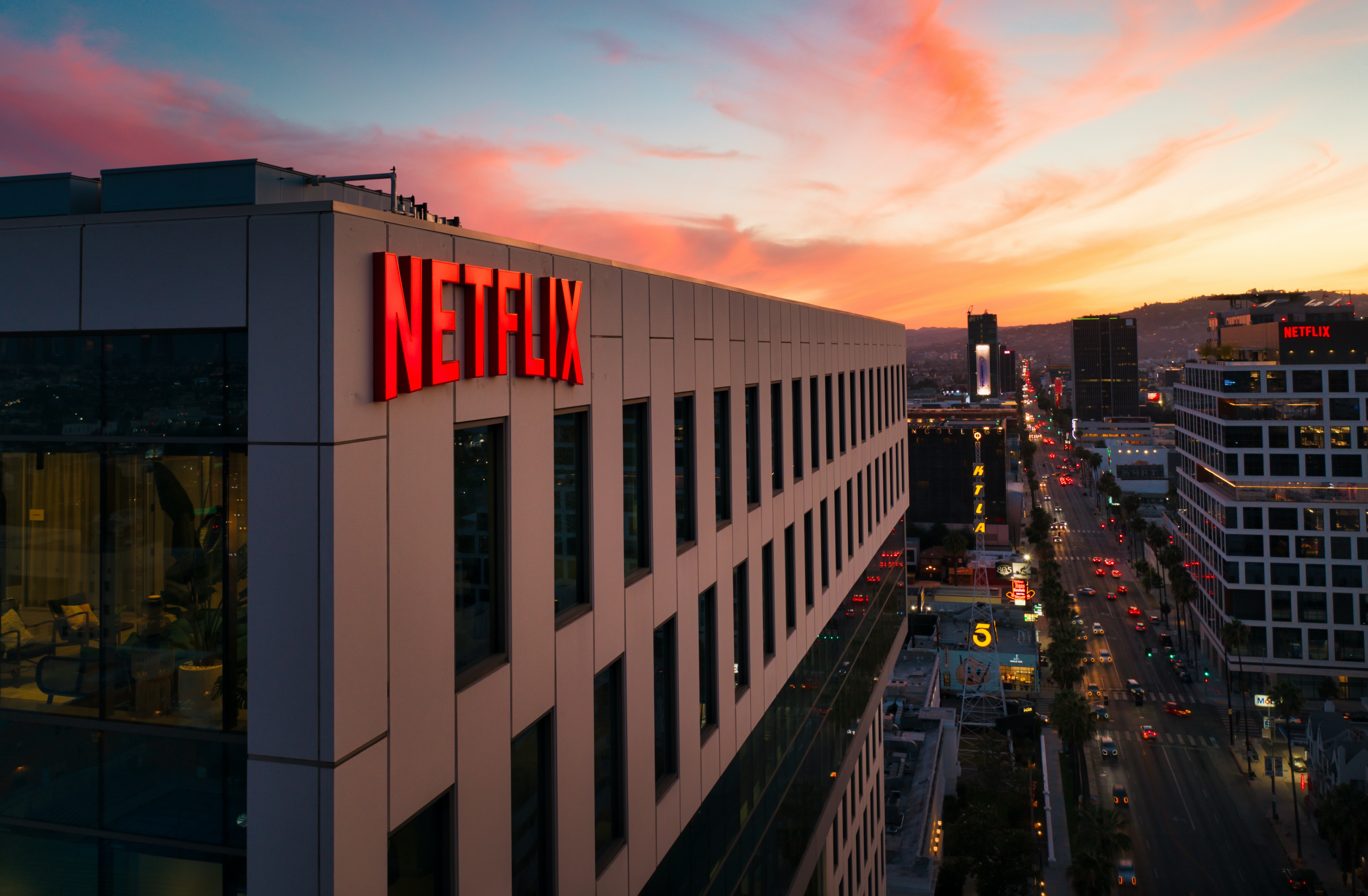 |
|
THE STREAMING GIANT HAS COMMITTED TO REDUCING ITS GREENHOUSE GAS EMISSIONS Netflix has set the bar high by announcing that by the end of 2022 they want to achieve net zero greenhouse gas emissions. To meet this new commitment, the company has set up a programme called Net Zero + Nature. A new position has even been created to ensure its implementation. Emma Stewart is Netflix's first "sustainability manager", a position she has held since October 2020. This plan outlines the streaming platform's ambition to reduce its emissions in line with the Paris agreements, which aim to limit global warming to 1.5°C. In particular, the company talks about moving away from fossil fuels, using 100% renewable electricity or biofuels. Netflix is also committed to the conservation and regeneration of ecosystems that are essential for the removal of CO2 from the atmosphere. It should be noted, however, that the platform's ESG (Environmental and Social Governance) report onlyfocuses on the company's carbon footprint in it production activity, but not beyond; a rather criticalpoint when we know that the impact of streamingon the consumer side is just as important. It remains to be seen whether Netflix will revise its model by addressing fundamental issues of digital sobriety, which would imply putting an end to addictive design strategies that push its film and series fans to watch more and more... |
Cinema on Small and very Small Screens more Polluting?

Streaming platforms are one of the few industries that have benefitted from the COVID-19 pandemic, since the health crisis has boosted online video consumption. The health crisis has boosted online video consumption. Consumers are estimated to have watched 240 billion hours of streaming video from their mobile devices in the last quarter of 2020, compared to 146 billion hours in the first quarter of 2019, according to App Annie, a platform renowned for its accurate data on the mobile market. Yet this drastic increase is incompatible with the climate emergency. Digital broadcasting may seem dematerialised, but it is not immaterial. Data centres, terminals, broadcasting networks, etc. are all energy-intensive technologies. These emissions are therefore tangible and have a real impact on the state of the planet.
In the space of just one year, Netflix alone has increased its number of subscribers from 167 to 204 million in 2020. One of the recipes for this success? Autoplay. Comparable to the practice of scrolling on social networks, autoplay seeks to encourage viewers of online videos to never stop. One video ends, another is already loading. After the end of an episode of a TV series, the viewer has only a few seconds to decide to cancel the automatic launch of the next episode and watch the credits. Autoplay thus aims to remove the user's temporal points of reference by creating an uninterrupted flow of content. No wonder Netflix parties have become a prime activity in the home!

On social networks, "scrolling" allows the infinite viewing of photos or videos. This is so compulsive that it is now referred to as "doomscrolling", a term that describes this frenzy of rapid viewing
Streaming is available whenever you want it, wherever you want it, just a click away. The arrival of 5G and increasingly powerful technologies have made the consumption of films, series and, more generally, videos exponential. Streaming video represents a significant part of today's digital pollution. The increasing use of digital technologies today inevitably means growing impacts on our planet. For example, in 2018, online video viewing generated more than 300 million tonnes of CO2, comparable to the annual emissions of Spain. In the same year, watching pornographic videos generated as much carbon emissions as the residential sector in France.
These figures seem staggering, but stopping video streaming is still far from being the order of the day. Reducing its use, however, could be. At least that's what researchers at the Shift Project, a think tank that describes itself as working "towards a carbon-free economy", think. In its report, "Climate: the unsustainable use of online video", the organisation warns of this massive and growing consumption. It estimates that digital technology currently emits 4% of the world's greenhouse gases. This figure could double by 2025, to 8%, which would be equivalent to the current share of global emissions from light vehicles. The approach proposed by the Shift Project would reduce the increase in digital impact to 1.5% per year. This solution has a name: digital sobriety.

Split of data flows between different uses of digital and online video
Digital sobriety or the art of consuming streaming video more responsibly
What do you think of this new review of the most expensive shampoo in the world? Not very useful? Then how about this tenth video of an American soldier reuniting with their dog after such a long separation? Still as touching as ever? And those tens, hundreds, thousands of kittens, still as cute? Digital sobriety would take the approach of giving video streaming consumers what they want to watch, without trying to create new unsuspected consumption desires. Thus the Shift Project researchers talk about moving from "instinctive" to "reflective" digital behaviour. Consumers would be pushed to adopt new behaviours, accessing content that is less important in volume but more adapted to their needs. No more autoplay or scrolling, no more endless streams of videos of kittens.
But to do this, the need for regulation is essential. This will be possible in the case of a dialogue between governments, regulatory bodies, industry players (broadcasting platforms, content producers), and civil society. This proposal for a new economic model questions and disrupts habits that have become deeply rooted among consumers, and implies a new collective management of uses. Thus, as its authors emphasise, it cannot be implemented without a public debate. Awareness on the part of the major companies in the sector is now essential in order to anticipate the movement. The impetus must also come from the public. Reducing streaming consumption, keeping digital equipment for as long as possible, watching videos in lower definition... these are small commitments that can be made by everyone and that on a large scale make a real difference.
 |
|
THE STREAMING GIANT HAS COMMITTED TO REDUCING ITS GREENHOUSE GAS EMISSIONS Netflix has set the bar high by announcing that by the end of 2022 they want to achieve net zero greenhouse gas emissions. To meet this new commitment, the company has set up a programme called Net Zero + Nature. A new position has even been created to ensure its implementation. Emma Stewart is Netflix's first "sustainability manager", a position she has held since October 2020. This plan outlines the streaming platform's ambition to reduce its emissions in line with the Paris agreements, which aim to limit global warming to 1.5°C. In particular, the company talks about moving away from fossil fuels, using 100% renewable electricity or biofuels. Netflix is also committed to the conservation and regeneration of ecosystems that are essential for the removal of CO2 from the atmosphere. It should be noted, however, that the platform's ESG (Environmental and Social Governance) report onlyfocuses on the company's carbon footprint in it production activity, but not beyond; a rather criticalpoint when we know that the impact of streamingon the consumer side is just as important. It remains to be seen whether Netflix will revise its model by addressing fundamental issues of digital sobriety, which would imply putting an end to addictive design strategies that push its film and series fans to watch more and more... |
10 hours of high definition film encompasses more data than all English Wikipedia articles in text format
Pornographic videos represent 27% of all online video traffic worldwide
Digital technology now accounts for almost 4% of global carbon emissions
To be read also in the dossier "Polluting Cinema: End Clap?"

